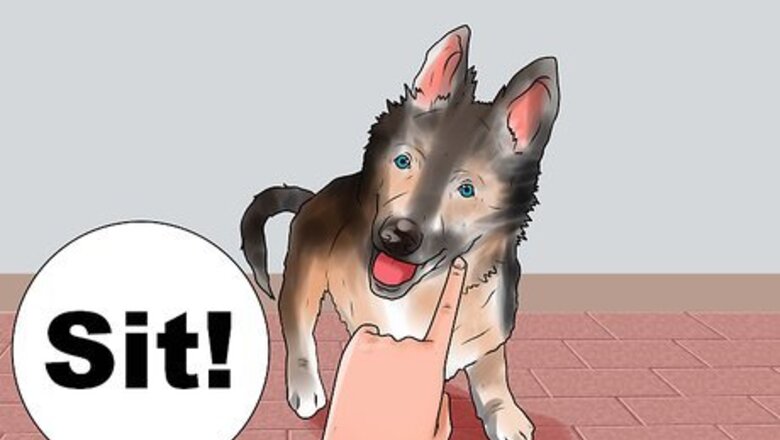
views
Training a German Shepherd Puppy

Begin your training attempts at around eight weeks old. Although any German Shepherd dog is trainable, they are very strong and powerful animals. If you start out with a puppy, you have the opportunity to shape and mold its personality and develop your relationship early. If you happen to get an older dog, adult dogs can still be trained effectively. German Shepherds can be very protective of their family members, so you want to socialize your puppy early in puppyhood. This will get them used to interacting well with a wide variety of people and animals, which is essential.
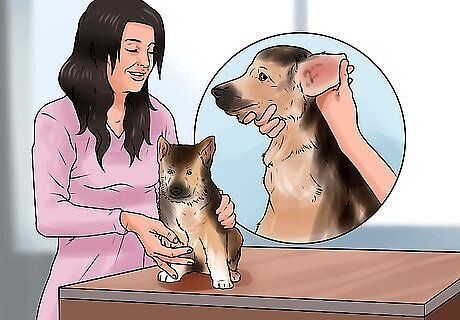
Start gently handling your puppy’s paws, ears, tail, etc. This will be a big dog, and you want to prepare the dog when they are young and small for future grooming and veterinary visits. They may need nail trimming, ear cleaning, temperature taking and other procedures. These procedures will be difficult to accomplish should your full-sized adult German Shepherd dog object.
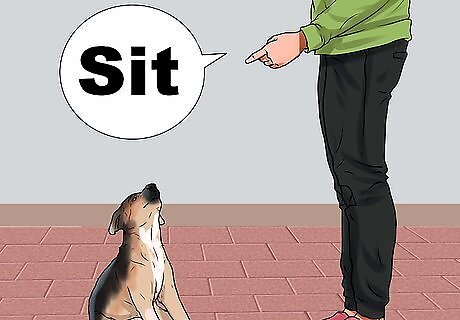
Begin training your puppy with basic commands. You will need to train them to sit, stay, and heel, in addition to house training them. Your puppy will not understand your commands immediately. Have patience with your dog when they don't do exactly what you ask right away.

Use food treats and praise to reinforce your commands. German Shepherds love to learn and they are highly motivated to follow your commands if they are rewarded with treats.
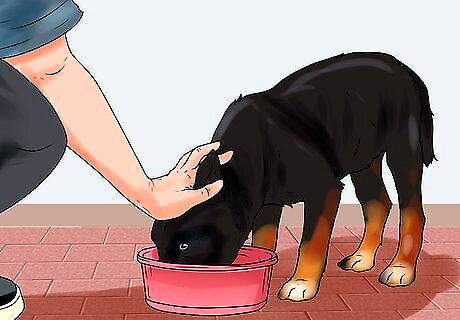
Prevent feed bowl aggression. Pet your puppy while they're eating, as long as they do not stiffen and stop eating when you are petting the puppy. If the puppy stiffens, stops eating or growls, you have to deal with this aggressive response immediately.
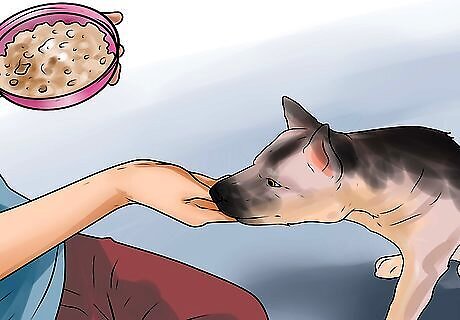
Address food aggression. Do this by removing the food bowl and feeding the dog by hand. The puppy needs to earn each and every piece of food from you with a “sit” or some other command. There is no bowl to guard. Once the puppy is more confident and compliant around food, you can bring out a plate or bowl and continue your hand feeding routine in the presence of the bowl or plate, but don’t feed directly on the plate yet. Make the bowl no big deal. If a piece of food is dropped inside, let the puppy take it and praise them. Then feed nearby again. The bowl will not always have food inside. Gradually increase the amount of food you drop in the bowl as you stand or sit there with the puppy. It won’t take long before the puppy realizes that you near the bowl means food and good things and it is not something to guard. You can also add high value treats like roasted chicken breast into the bowl if your puppy seems to need more reassurance that you bring goodness to the food bowl. Resource guarding can be a very serious symptom of fear aggression and, if you are seeing this in a puppy, it needs to be addressed ASAP so it does not escalate.
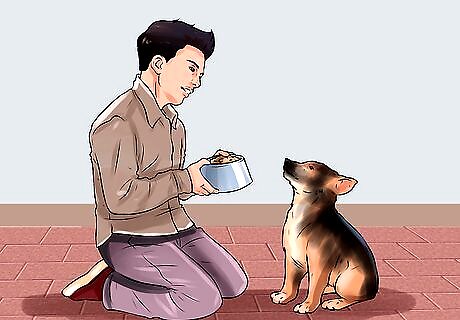
Use feeding time as a training time. You can gradually ask the puppy to look at you to get more food, then sit and wait for more food, etc.. The humans controls the resource of food and rewards the puppy for good behavior.
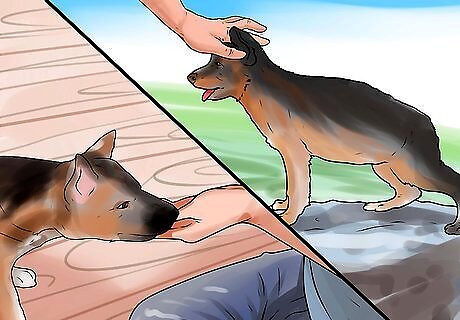
Wean your puppy off of treats for performance. After your puppy has mastered a command, start treating intermittently so that you don’t have a dog that will only perform for food. You still praise your dog, just not offer a treat each time. If you are working to modify a command to create a faster response, add in treats again to shape the behavior until they have it down. Then start using treats to reward truly outstanding performance.
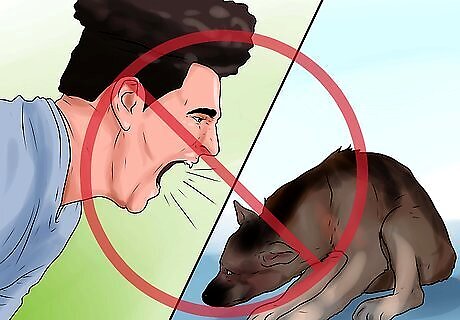
Do not create fear in your puppy. Do not yell at your pet. Learn to recognize when you are losing patience and stop the training session on a happy note. Your dog can sense your frustration in your body language and tone of voice. Try another day when you are both fresh. If you continue to have problems, get a professional trainer involved.
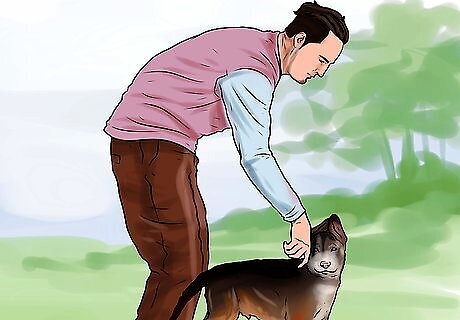
Enroll your German Shepherd puppy in a basic or puppy obedience class. Typically, as puppies are first learning commands, one adult family member will be responsible for training. Later, when the puppy is consistent and understands the basics, other members of the family can participate in formal training. It is important for the dog to understand that not only one person in the household is to be obeyed. Your puppy should be 8-10 weeks old and started on their vaccine series for this first class. There are puppy preschools designed for puppies who have not yet finished receiving all of their vaccines. The school will have certain requirements for enrollment and you will likely have to provide proof of vaccination.
Training an Adult German Shepherd
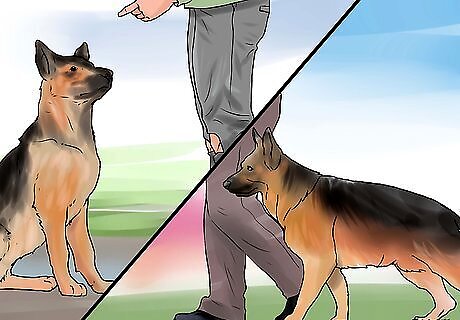
Begin with dog training basics. German Shepherds are not necessarily any different than other dogs when it comes to training. If your dog does not know simple commands, such as sit and heel, then start with those. It is important to begin training by building trust between you and your dog. Keep training sessions happy and short and give the dog a break in between lessons for play and a drink.
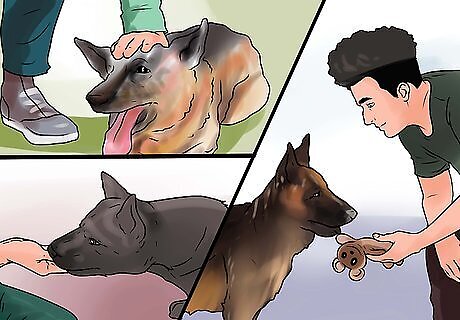
Use food, praise, and toys as motivators. Food is a powerful motivator for most dogs. Other dogs, particularly those with a high prey drive, respond well to toys as a reward. Either way, praise, in addition to a reward that is valuable to your dog, is used to communicate to your dog that they have performed well. The timing of the reward is extremely important. Your praise and reward will need to come within two to three seconds of the behavior you are reinforcing. If the dog does something else in between the desired behavior and the reward, you are rewarding the last thing that the dog performed. For instance, if you want to teach the “sit” command, the praise and treat should be delivered when the dog is sitting with all feet on the ground. If you deliver the praise/treat with one paw up or as the dog starts getting up, you have just rewarded the dog for that most recent behavior. Treats should be small and tasty. Consider three types: Low, medium and high value treats. Keep these in your arsenal to help your dog learn commands. When they first learn a new command, you may need medium or high value to treats to start them off and treat for every success. As they understand the command more, start adding in lower value treats intermittently. You can always go back to high value treats at any time you want to let the dog know they did something exceptionally great and you want them to remember that so you get that behavior again and again. Gradually, you will phase out any treat and do more praise reward as the dog gets more consistent. You don’t want to create a dog that will only work for food and ignore you the rest of the time. That could become a dangerous situation.
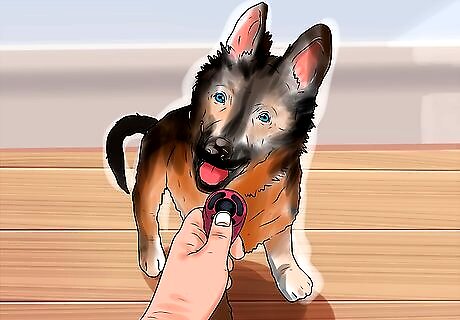
Consider clicker training. Clicker training is a method where the dog learns to associate the sound of the clicker as a positive “marker” for behavior.[3] You start by clicking the device while feeding a high value treat over and over again so that the dog learns that the clicker sound means “very good.” After that association is made in the dog’s mind, you can create, or “shape,” behaviors by clicking as the dog performs a behavior you like. You can click faster than you can praise or treat, so by clicking you reward the dog instantly and then follow up the click with a treat. Clicker training is an incredible way to train dogs because they learn so fast with such immediate feedback.
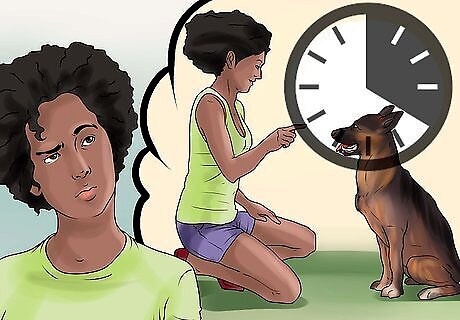
Spend no more than 20 minutes per training session without a break. Spend even less time (5 to 10 minutes) for younger pups. Multiple shorter training session are generally more effective than one long one, particularly for puppies under 6 months of age. Their attention span is short and puppies get tired; your patience will be worn thin trying to train an over tired puppy. Training has to be upbeat and happy in order to get the maximum response from the dog. Play with the puppy in between and help them understand that people are fun and not all about “school” all the time.
Understanding Dog Training
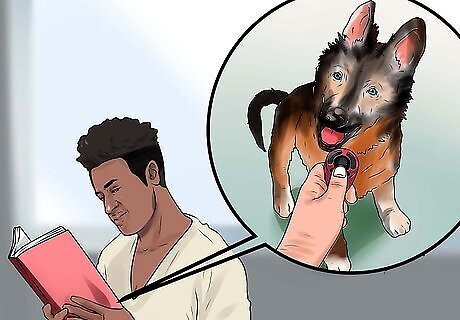
Learn about dog training in general. Educate yourself so you can teach your puppy properly and avoid common training mistakes. There are many methods of dog training and some will work better for you and your pet than others. Each dog is unique, as is the trainer, so learning the basics of dog behavior and basic dog training will provide you with the proper foundation for understanding the process of training your pet. No one method is “perfect,” so your research will help you decide what approach to start. There methods of dog training based on only positive training techniques, versus techniques which balance positive and negative reinforcement. You may even try a method and find that you are not getting the results you want and decide to try another. An experienced dog trainer will be able to help you troubleshoot roadblocks. Read dog training books. Some good training books to consider are “Don’t Shoot the Dog” by Karen Pryor, “Getting Started: Clicker Training for Dogs” by Karen Pryor, “The Power of Positive Dog Training” by Pat Miller, “25 Stupid Mistakes Dog Owners Make” by Janine Adams, and “The Mentally Sound Dog: How to Shape, Train and Change Canine Behavior” by Gail I. Clark. Watch videos of training techniques. There are a lot of dog training videos on the internet, so make sure that the videos you choose are made by experts in dog training.
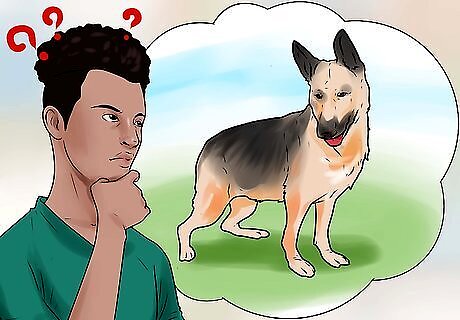
Learn about the unique attributes of the German Shepherd breed. Know what will be required of you before adopting a German Shepherd. While there are many similarities in how to care for dogs in general, German Shepherds are working dogs, which means they need a lot of exercise and mental stimulation. Understand that having a German Shepherd will require a lot of your time and patience.
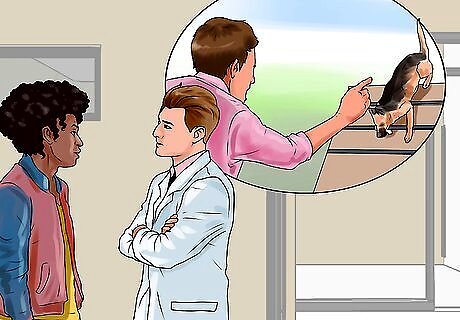
Talk to German Shepherd owners and trainers. Go to dog shows and watch how owners and trainers interact with their dogs, as well as paying attention to how German Shepherds respond to stimuli and commands. Visit dog trainers and ask if you can watch a few classes. You will learn a lot watching other people when you don’t have a dog of your own. See if you like the way the trainer works with the people and the dogs. You and your dog will learn better if you have a good learning relationship with your trainer. The Association of Professional Dog Trainers website is an excellent reference and place to start looking for a dog trainer to coach you and your pup.














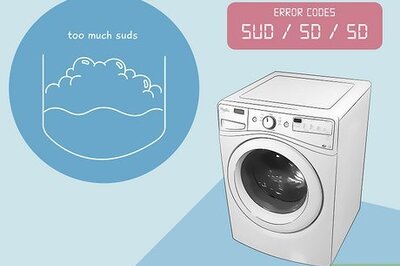

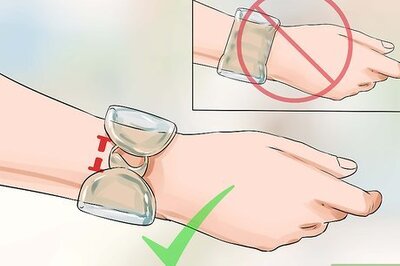

Comments
0 comment